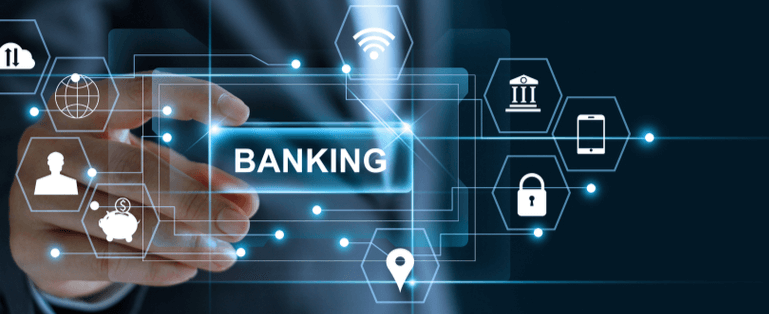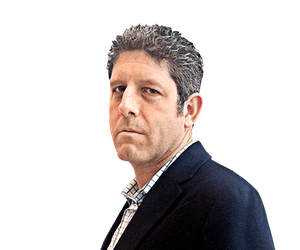- Category: Banking
- Written by Paul William
- Hits: 7083
Banking in America
Banking in America is little different from other countries, American banking system is complex in nature. U.S banking system has dual structure. I would like to inform you that this banking article is going to be a bit long but interesting one at the same time. I would try to cover various banking systems, terminologies and information that will help you to understand banking in United States.
To understand banking in America in a better way, Let us understand one at a time
- History of banking in America
- Dual Banking Structure
- Federal Reserve System
- Type of Banks
- FDIC
- Federal Reserve Board Functions
- Regulators
__________________
History of banking in America
The first national bank in America was Chartered on 12th December, 1791 by Alexander Hamilton under the U.S president George Washington. There were many opposing voices, however Hamilton's bill cleared in both the houses and the Senate for establishing a national bank. They named the bank "The First Bank of the United States". The period 1780-1880 was very crucial for banking in America, as most of the key systems were introduced in this era. In 1816 The Second Bank of the United States was created as the First Bank of the United States was corrupted by few wealthy people. This bank also couldn't last long and the renewal was denied in 1836. As both the national bank failed to serve the people of United States, it led all the states to charter their own banks. These banks started issuing paper currency. They printed as per their gold reserve (commodity money). Soon, even drugstores and insurance companies started issuing paper money (representative money). So, country was filled with tens of different colored currencies. This was free banking era and this couldn't last long, it started in 1837 and ended by 1863 when the congress passed the National Banking Act of 1863 and 1864

The National Banking Act 1863 created national currency backed by government securities held by other banks. It also established the office of the comptroller of the currency to regulate and examine national banks. As per the act, in 1965 the congress allowed the banks to become national bank at 10% taxing. This encouraged many banks, all these circumstances led to the dual banking structure. After this in 1913 Federal Reserve Act was introduced to look at the ups and downs of the American economy. Glass-Steagall Act was signed in 1933 to make sure banks could not trade in risky portfolios. it also established Federal Deposit Insurance Corporation (FDIC) which ensures your savings are safe.
Dual Banking Structure in America
Banking in America or the American banking system has dual structure, it means there there are two regulators the federal and the state, a bank can be chartered by either of one. A federal chartered bank is regulated by the Office of the Comptroller of the Currency e.g. Wells Fargo, Bank of America and so on.. and a state chartered bank is regulated by FDIC and supervised by Federal Reserve Board e.g. United Community Bank. To choose between the two, depends on how big the bank is, who are the bank's target customer, what their customers do, and hundreds of other factors.
Federally chartered banks are generally big, these banks get the benefits of the federal laws while the state chartered are community centric banks, these banks have to deal with the local economy and their specific requirements. In other words, If a "Book" is Federal chartered Bank than "Chapter" is a state chartered bank. There are many businesses that are legal as per the state laws but are not as per the federal law. Here, the state banks are can be benefitted.
Both type of American banks have the same products and services, just the regulators are different. With time the number of federal banks are decreasing. In 1880 there were 4000+ national banks, now there is only 896. The number of state banks decreased as well but in a slower rate compared to the federal banks.
Federal Reserve System
Federal Reserve is the central bank of America which regulates monetary, financial and banking policies. It also, decides when and how much money to be printed by the Bureau of Engraving and Printing. It was established by an act called the federal reserve act in 1913. It consists of 12 regional reserve banks in different parts to serve banking in America. Federal Open Market Committee (FOMC) is a part of Fed and it regulates monetary policies and and decides on money supply.
The federal reserve has 7 board of governors, they serve for 14 years, the long term is due to stability factor. Most of the decisions of the board are independent, however, those decisions should come under government's economic policies.
Federal Reserve serves the following
- Regulate American banking and financial institutions
- Regulate American monetary policy
- Protect credit rights of consumer
- It provides financial services to the U.S government
- Stabilize the American financial system
___________
Types of Banking in America
There are mainly seven type of banks in America. Every type has a specific role and and are expertize in their areas
- Central Banks - They control the monetary policies, inflations, interest rates, etc.. as per the government economic policies
- Retail Banks - These are bricks and mortar banks to server customers day to day banking needs in America
- Commercial Banks - Commercial Banking in America is huge, these banks serves the business and corporate clients
- Private banks - Specially created for wealthy people
- Investment Banks - Investment Bank deals in financing business, market making, bonds, mergers and acquisitions, IPO, etc..
- Mutual Banks/Credit Unions - These are small regional banks specialized in serving community
- Online Banks - These are the banks that can be accessed only through internet, they don't have a physical location.
FDIC (Federal Deposit Insurance Corporation)
FDIC is a federal government agency which secures the deposits of customers in the banks. In other words, if in an untoward circumstance a bank fails, FDIC ensures the deposits made by the customers are safe. FDIC was created so that customers can trust banks. Every depositor of FDIC membered banks are insured with $250,000 dollars. FDIC has a line of credit of $100 billion dollars with U.S. treasury. FDIC is not public funded it's reserve is accumulated from member bank's insurance dues.
The other function of FDIC is to supervise a monitor state chartered banks. However, it doesn't look after trading, bonds, life insurance, etc.. and is mainly focused on any form of deposits such savings and checking accounts, CDs, IRAS, etc..
________
Federal Reserve Board Functions
The board of governors are appointed by the president of the United States of America, there are seven members in the board and are appointed for 14 long years. They are the decision makers of Federal Reserve System. The main functions are
- Monetary policy and banking supervision
- Financial services to the government
Monetary policy and banking supervision
Fed is responsible for the stability of prices, inflation, discount rate, interest rates, job creations, all these come under monetary policy and these helps in the economic growth of the country. Most of these factors can be tweaked as per the need of the hour. Banking in America is very competitive, every bank wants to be the best and in doing so they might cross limits intentionally or unintentionally, so, the board dictates the rules and regulations that needs to be adhered strictly.
The board also looks at the various issues faced by the banks and does its best to resolve them. At the same time it also sees if the consumers are all safe and protected and the banks are in compliance with the rules and regulations.
Regulators
There are mainly seven regulators to look at the banking industry in America. Every regulator has a different responsibility based on the type of the financial institution. Here is the list of regulators :
- Federal Reserve System - It is the central bank of America as described above
- Federal Deposit Insurance Corporation - It safeguards customer deposits
- Comptroller of the currency - It looks after the national banks
- National Credit Union Administration - It safeguards customer deposits in credit unions
- Office of thrift supervision - It issues regulations on saving and loans
- State Regulator - Every state has its own financial regulator
- Conference of state bank supervisors - It supervise all the state banks and the state regulators and helps in maintaining the dual structure of banking in America.













